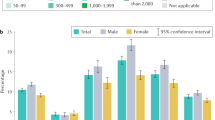Abstract
Nowadays, patients admitted to critical care units have most of their physiological parameters sensed by sophisticated commercial monitoring devices. These devices also supervise whether the values of the parameters lie within a preestablished range of normality set by the clinician. If any of the parameters leaves its normality range, an alarm will be triggered. The automation of the sensing and supervision of physiological parameters discharges the healthcare staff of a considerable workload. It also avoids human errors, which are common in repetitive and monotonous tasks.
Urine output is a physiological parameter that, despite being of great relevance in the treatment of critical care patients, is still measured and supervised manually. This paper presents a device capable of sensing and supervising urine output automatically. The device uses reed switches that are activated by a magnet that is attached to a float in order to measure the amount of urine collected in two containers. An electronic unit sends the state of the reed switches to a PC, which supervises the achievement of therapeutic goals.
Access this chapter
Tax calculation will be finalised at checkout
Purchases are for personal use only
Preview
Unable to display preview. Download preview PDF.
Similar content being viewed by others
References
Akinfiev, T., Apalkov, A., Otero, A., Palacios, F.: Device for measuring the amount of liquid that flows and procedure for its measurement. Patent Pending, eS 201031227 (2010)
Amaravadi, R., Dimick, J., Pronovost, P., Lipsett, P.: ICU nurse-to-patient ratio is associated with complications and resource use after esophagectomy. Intensive Care Medicine 26(12), 1857–1862 (2000)
Barro, S., Marín, R., Palacios, F., Ruíz, R.: Fuzzy logic in a patient supervision systems. Artificial Intelligence in Medicine 21, 193–199 (2001)
Dimick, J., Pronovost, P., Heitmiller, R., Lipsett, P.: Intensive care unit physician staffing is associated with decreased length of stay, hospital cost, and complications after esophageal resection. Critical Care Medicine 29(4), 753 (2001)
Hande, A., Polk, T., Walker, W., Bhatia, D.: Self-powered wireless sensor networks for remote patient monitoring in hospitals. Sensors 6(9), 1102–1117 (2006)
Hersch, M., Einav, S., Izbicki, G.: Accuracy and ease of use of a novel electronic urine output monitoring device compared with standard manual urinometer in the intensive care unit. Journal of Critical Care 24, 629–633 (2009)
Ishida, S.: Liquid level indicator using laser beam. us patent 4938590 (1990)
Johnson, S.J.: Liquid level measurement device. United States Patent 3693445 (1978)
Jungk, A., Thull, B., Rau, G.: Intelligent Alarms for Anaesthesia Monitoring Based on Fuzzy Logic Approach, pp. 219–238. Physica-Verlag (2002)
Kaufmann, A., Gupta, M.: Introduction to Fuzzy Arithmetic. Van Nostrand Reinhold Company Inc. (1984)
Klenzak, J., Himmelfarb, J.: Sepsis and the kidney. Critical Care Clinics 21(2), 211–222 (2005)
Knauf, R., Lichtig, L., Risen-McCoy, R., Singer, A., Wozniak, L.: Implementing nursing’s report card: a study of RN staffing, length of stay and patient outcomes. American Nurses Association, Washington (1997)
Kovner, C., Gergen, P.: Nurse staffing levels and adverse events following surgery in US hospitals. Journal of Nursing Scholarship 30(4), 315–321 (1998)
Mitra, B., Fitzgerald, M., Cameron, P., Cleland, H.: Fluid resuscitation in major burns. ANZ Journal of Surgery 76, 35–38 (2006)
Mora, F., Passariello, G., Carrault, G., Pichon, J.L.: Intelligent patient monitoring and management systems: A review. IEEE Engineering in Medicine and Biology 12, 23–33 (1993)
Otero, A., Akinfiev, T., Fernández, R., Palacios, F.: A device for automatic measurement of critical care patient’s urine output. In: 6th IEEE International Symposium on Intelligent Signal Processing, pp. 169–174 (2009)
Otero, A., Akinfiev, T., Fernández, R., Palacios, F.: A device for automatically measuring and supervising the critical care patient’s urine output. Sensors 10(1), 934–951 (2010)
Otero, A., Félix, P., Barro, S., Palacios, F.: Addressing the flaws of current critical alarms: a fuzzy constraint satisfaction approach. Artificial Intelligence in Medicine 47(3), 219–238 (2009)
Otero, A., Panigrahi, B., Palacios, F., Akinfiev, T., Fernández, R.: A prototype device to measure and supervise urine output of critical patients, pp. 321–324. Intech (2009)
Pronovost, P., Angus, D., Dorman, T., Robinson, K., Dremsizov, T., Young, T.: Physician staffing patterns and clinical outcomes in critically ill patients: a systematic review. Jama 288(17), 2151 (2002)
Pronovost, P., Needham, D., Waters, H., Birkmeyer, C., Calinawan, J., Birkmeyer, J., Dorman, T.: Intensive care unit physician staffing: Financial modeling of the Leapfrog standard*. Critical Care Medicine 32(6), 1247 (2004)
Rivers, E., Nguyen, B., Havstad, S., Ressler, J., Muzzin, A., Knoblich, B., Peterson, E., Tomlanovich, M., Group, E.G.D.T.C.: Early goal-directed therapy in the treatment of severe sepsis and septic shock. New England Journal of Medicine 345, 1368–1377 (2001)
Zadeh, L.: The concept of a linguistic variable and its application to approximate reasoning. Information Science 8, 199–249 (1975), part 1
Author information
Authors and Affiliations
Editor information
Editors and Affiliations
Rights and permissions
Copyright information
© 2013 Springer-Verlag Berlin Heidelberg
About this paper
Cite this paper
Otero, A., Palacios, F., Apalkov, A., Fernández, R. (2013). A Simple and Low Cost Device for Automatically Supervising Urine Output of Critical Patients. In: Fred, A., Filipe, J., Gamboa, H. (eds) Biomedical Engineering Systems and Technologies. BIOSTEC 2011. Communications in Computer and Information Science, vol 273. Springer, Berlin, Heidelberg. https://doi.org/10.1007/978-3-642-29752-6_2
Download citation
DOI: https://doi.org/10.1007/978-3-642-29752-6_2
Publisher Name: Springer, Berlin, Heidelberg
Print ISBN: 978-3-642-29751-9
Online ISBN: 978-3-642-29752-6
eBook Packages: Computer ScienceComputer Science (R0)




